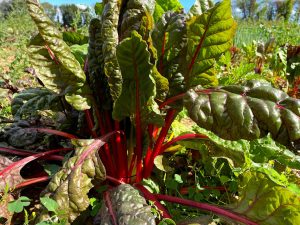Using Produce’s Tops & Bottoms
Using Produce’s Tops & Bottoms
Learning to use the entire part of fruits and vegetables is not only sensible, it’s environmentally friendly, more economical, and healthier for you. Purchasing whole vegetables from the growing source ensures fresher produce and is a better value than packaged food, not to mention, without any of the packaging waste. You can stretch your food… Read More »

Some basic advice for reducing food waste is to emulate how our grandparents lived in simpler times. Start by shopping more frequently, buying smaller quantities to consume in a couple of days, and then properly storing your produce by taking the time to prep them once you bring them home. Organizing your refrigerator so that the most perishable produce is right within reach encourages you to use these items first. Storing fruits and vegetables in separate containers may help produce stay fresher longer as certain fruits produce ethylene which ripens vegetables prematurely. Pickling, freezing and preserving are excellent ways to give aging produce a new life.
There are various individual methods for storing your produce in season and we’ve put together a list of helpful tips from our Culinary Specialist, Miss Jenn, to get you started using your produce’s tops and bottoms at home!

Fresh herbs– start by removing rubber bands and making a fresh cut on the stems. Herbs then can be kept on the counter in a container of water for a few days. Change the water daily. Fresh herbs can be stored in a paper towel covered plastic bag for up to one week, however, if you know that they are about to go bad, preserve them! You can preserve herbs by chopping and adding to vinegar or butter or oil and then freezing in ice cube trays. You can also preserve herbs by freezing them as is for use in sauces, stews, soups or spreads.
Did you know that stalks, stems and leaves are delicious eaten raw or cooked and

Still have some leftover produce scraps? Compost what’s left! Read our Blog on Composting to learn more! https://www.alstedefarms.com/news/composting-101/
We hope we have inspired you to explore utilizing all of the tops and bottoms of your fruits and vegetables to reduce food waste and enjoy more of the plant’s nutrition while saving money and reducing your carbon footprint.







